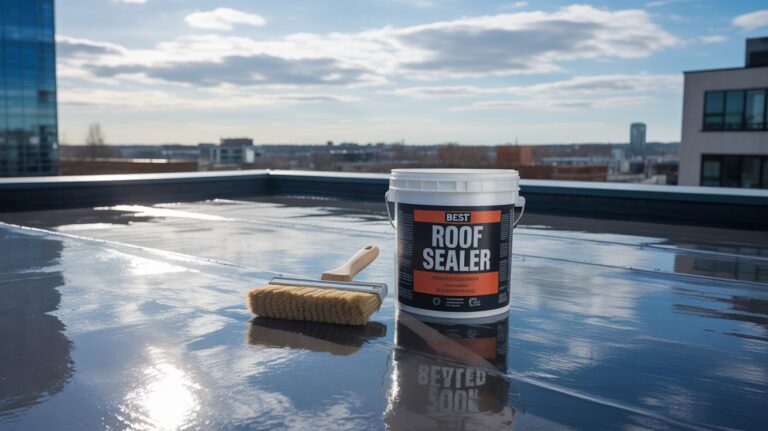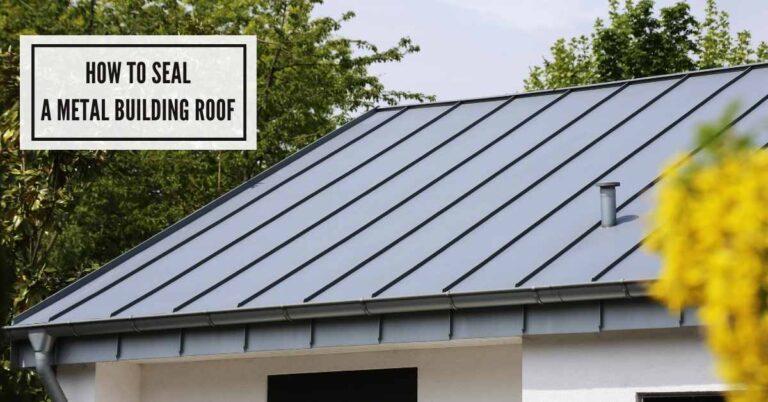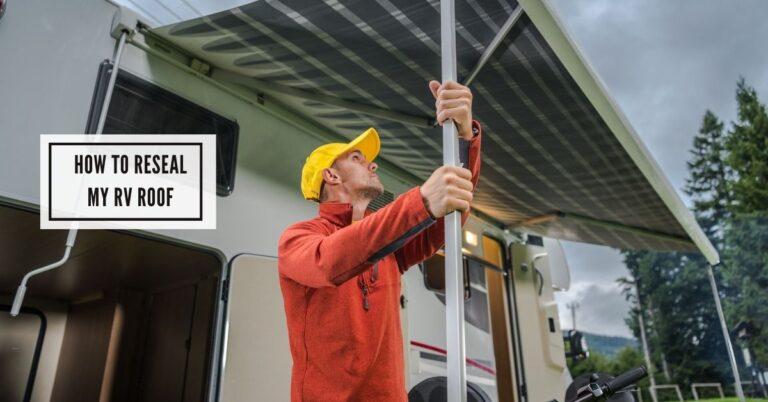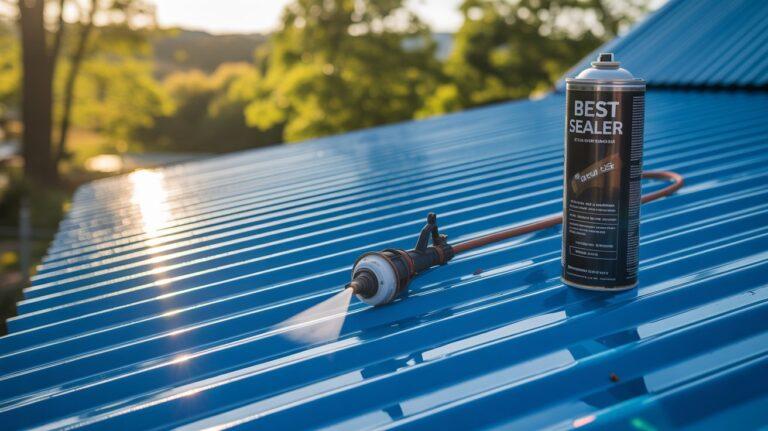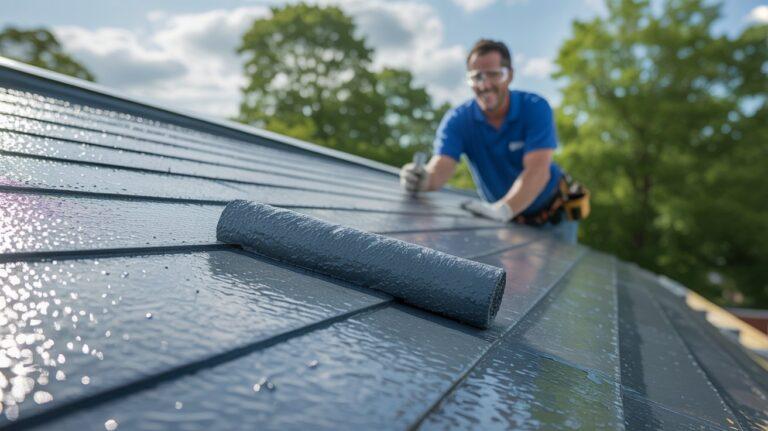How To Remove Flex Seal From RV Roof : 3 Easy Steps to Eliminate Permanently
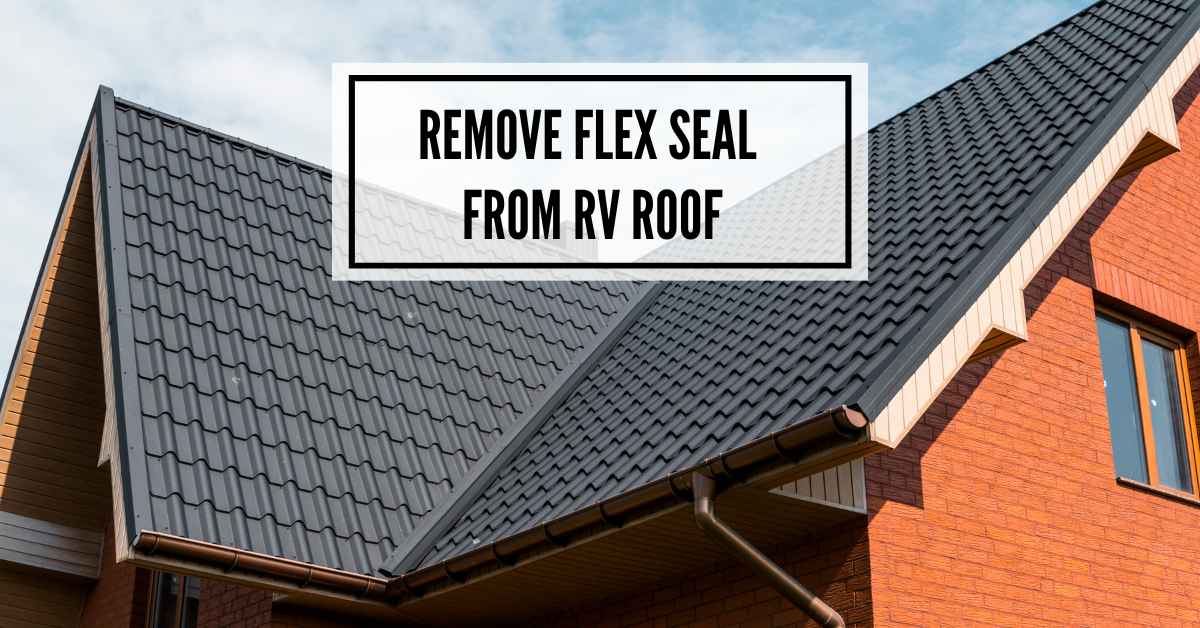
RV roofs are made of various materials, such as aluminum, fiberglass, vinyl, rubber TPO, etc. Choosing a compatible flex seal is crucial. Have you applied an incompatible adhesive bonding product on your RV roof?
Or you may want to take off the old sealant from the RV roof and add a new one. It is not mandatory to be an expert to learn how to remove flex seal from RV roof. Knowing some basic steps can do the job. Don’t miss out on this article if you struggle with this issue.
What is Flex Seal?
Flex Seal is a liquid rubber product commonly used to seal leaks and repair cracks on various surfaces, including RV roofs. It is waterproof and can create a robust and durable bond on metal, rubber, and concrete surfaces.
Why Do You Need to Remove Flex Seal from RV Roof?
You must have a reason to scrape away the flex seal from an RV roof.
The followings are the common reasons behind removing this adhesive bonding product from the RV roof surface.
i) Incompatible Flex Seal
Flex seals come in various types. Choosing a particular option depends on what material your RV roof has.
Does it have aluminum, fiberglass, vinyl, or rubber TPO? If you have applied the wrong flex seal, it may lead to leaks and damage to the roof surface.
Hence, you want to clear the flex seal and use a new compatible one.
ii) Worn Out Flex Seal
Flex seals are not as effective as RV roof sealants. They are not 100% UV resistant and likely to last a few months if exposed to direct sunlight daily.
When a lot of worn-out signs are visible, you want to remove the RV roof sealant quickly and apply a new one.
iii) Repair or Replace the RV Roof
RV roofs generally last 20 years on average. But their lifespan can be reduced to 5 to 10 years.
It may happen for various reasons, such as exposure to the elements, lack of maintenance, heavy use, improper use, etc.
Unless you scrape out this adhesive bonding product, it will be hard to see the damage and determine how much repair is needed.
It also helps you determine whether repairing will be enough or if you need to change the entire RV roof.
iv) Adding A New Layer of Paint
The paint or coating of an RV roof lasts around 10 to 15 years. Applying a new layer is necessary on the RV roof surface.
If the paint is heavily damaged, you may need to add a thin coating layer. In this case, removing the flex seal is necessary before applying the paint.
v) Improper Application
Have you applied a layer of too-thin flex seal on your RV roof but noticed it once it was fully dry?
An excessively thin flex seal will lose its effectiveness quickly. It will fail to protect the RV’s roof surface from corrosion.
You may see melting, peeling off, or cracking issues faster. Reapplying a flex seal on the existing will create uneven coverage.
It is best to remove the older layer first and add a new layer of adhesive carefully and evenly across the roof surface.
How to Remove Flex Seal from RV Roof with Effective Techniques?
Removing a flex seal from the RV roof might be a bit painful. But the removal task won’t be too complicated if you know the right step and have all the essential items.
| NO | Items You Will Need |
| 01 | Putty Knife |
| 02 | Razor Blade |
| 03 | Paper Towel |
| 04 | Mineral Spirits, Acetone, Or Toluene |
| 05 | All Purpose Cleaner |
Here is the step-by-step guideline to get off the flex seal from the RV roof.
Step: 01—Scraping Off the Top Layer
Grab your putty or spackle knife and use the scraping tool to remove flex seal substances from the RV roof.
Ensure the sharp edge of the putty knife firmly contacts the RV roof surface. But avoid overdoing it. You may otherwise remove the RV paint.
If the flex seal for the RV roof has a thicker coat, you can utilize a fine razor blade. Keep the razor blade at a slight or shallow angle to the roof surface.
The sharp edge should be faced away from you. Start scraping off the flex seal from a corner. Apply only light pressure and work in a small area at a time.
Use a paper towel periodically to wipe away any loose substances from the roof surface.
Step: 02—Using the Right Flex Seal Remover
After removing the top layer of the RV roof sealant, you can now use a flex seal remover.
But what product should you use? Various products, such as mineral spirits, acetone, and toluene, are available to remove flex seals from RV roofs.
When using mineral spirits, ensure they don’t contain bleaching agents. Otherwise, it may ruin the RV roof paint.
Alternatively, you can also use acetone. Apply a small amount of solution and let it sit for 1-2 minutes. It will quickly break down and dissolve the substances.
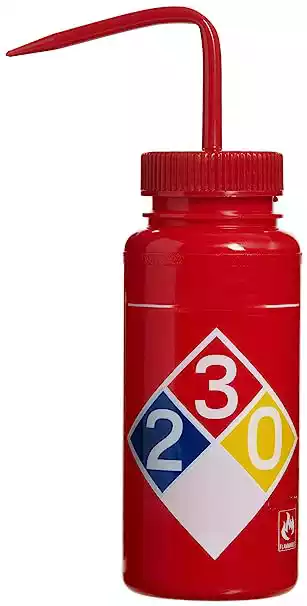
If the flex seal is too tough, you can use toluene which is mainly a paint thinner. This powerful substance can quickly dissolve the chemical compounds of flex seal.
Avoid applying the solution directly. Instead, add it on an old rag or cloth and put gentle pressure to remove the adhesive bonding product.
Step: 03—Cleaning the Area
You can start cleaning the surface after removing all the flex seals from the RV roof.
Some areas of the RV roof may have dirt and debris if you last cleaned it a long time ago.
So, what to use to clean the RV roof? You can use Simple Green All-Purpose Cleaner, which has a concentrated formula to clean various surfaces effectively.
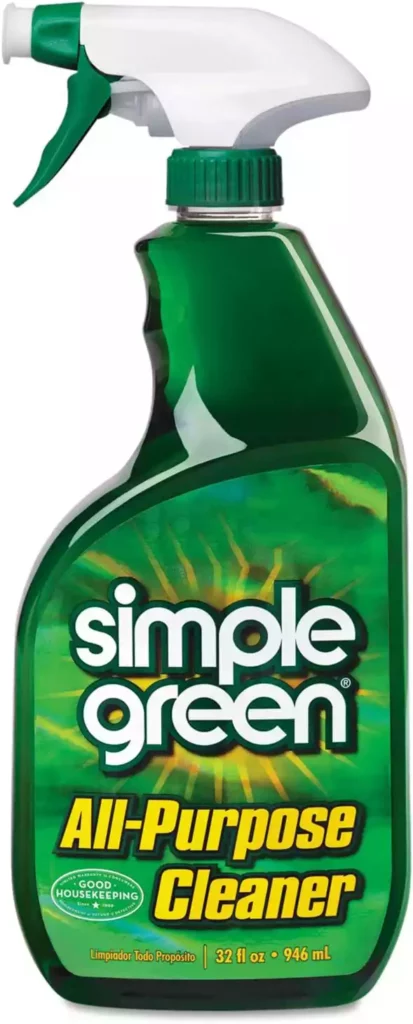
Spray the product two or three times on the dirty area. Let it sit for a few seconds. Then, use your old cloth to wipe away the dirt.
Finally, rinse the area with regular water for a perfect clean. Make sure to dry it properly before applying a new sealant.
Tips on Removing Flex Seal from RV Roof
You have already learned how to remove flex seal overspray from the RV roof step-by-step.
Here are a few bonus tips to make your removal task hassle-free.
a) Say No to Harsh Chemicals
Don’t use any flex seal remover that contains harsh chemicals. It may damage your RV roof surface.
If you are still determining the product’s safety, apply it on a tiny area and see its result before covering the entire region.
b) Use RV Roof Sealant
Flex seal may provide decent protection to your RV roof surface. But they are not the best option as they are not designed to use on RV roofs.
Instead, you can use specially made RV Roof Sealant, such as EternaBond Tape Micro Sealant, Geocel ProFlexRV Flexible Sealant, etc., to provide optimal protection.
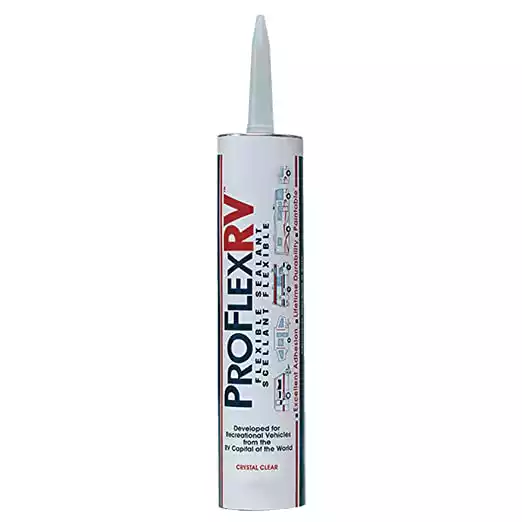
c) Wear Protective Equipment
Some dust and debris may fly in the air and get inside your mouth, nose, and eyes if you don’t have any safety gear.
Wear protective equipment, such as gloves, a mask, goggles, etc., to protect your body.
Also, work in a well-ventilated area to minimize the effect of transportation chemical substances of flex seal. You can also check my another article- how to remove flex seal from plastic surfaces.
FAQ’s
Is Using Solvents to Remove Flex Seal from My RV Roof Safe?
Yes, but it is essential to take safety precautions such as wearing gloves, safety glasses, and a respirator mask to protect yourself from fumes and debris.
Can I Use A Pressure Washer to Remove Flex Seal from My RV Roof?
No, a pressure washer can damage the roof surface and create new leaks.
How to Prevent Future Flex Seal Mishaps?
Follow the manufacturer’s instructions carefully and apply the product in a well-ventilated area. Also, prepare the surface before applying Flex Seal, and allow it to dry completely before exposing it to moisture.
Can I Apply New Sealant or Coating to My RV Roof After Removing Flex Seal?
Yes, but prepare the surface and allow it to dry completely before applying any new sealant or coating.
How Often Should I Inspect My RV Roof for Leaks or Damage?
Inspecting your RV roof at least twice a year, before and after the camping season, is recommended.
Wrapping UP
Taking off the RV roof’s flex seal may be tiresome if you have applied a thick coating. It may take around 2-3 hours to complete the task.
But it is worth your efforts and time when successfully removing the flex seal from an RV roof.
I have already mentioned how to remove flex seal from RV roof step-by-step. As a bonus, I cover a few tips too. This article has given you some valuable information.

I am Robert Sandin, a professional sealing expert with a diverse range of expertise. From concrete to various other materials, I possess in-depth knowledge and experience in the art of sealing. On my website, I offer valuable tips and expert recommendations on sealing techniques and products for different materials. Whether it’s concrete, wood, metal, or more, I am committed to providing you with the guidance you need for successful sealing projects.

